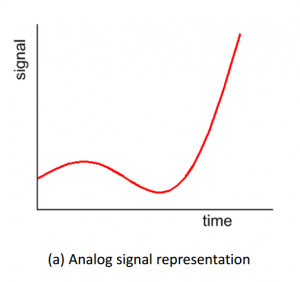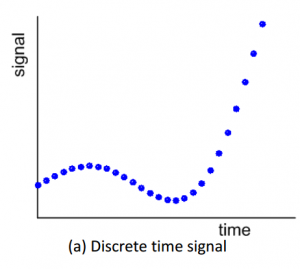To understand the best ways to enhance the way we listen to music, it is very important that we understand how signals are created in the sound system and how are they processed.
There are several methods that a high fidelity system uses to improve sound quality. Before addressing the components of the system itself, let’s look at the creation of a sound source. Music is heard by vibrations in the air. Music is then picked up by a microphone and translated to electrical signals to be edited and recorded. That signal can be recorded as an unchanged analog wave, or be digitized. The analog wave can be etched into a vinyl record or written on a magnetic tape. The bit rate of a digital sound source is important as it is what the rest of the sound system has to work with in order to create the final music. Below are two examples to explain: the initial analog signal recorded and the discrete signal generated by the digital filter. A higher bit rate system would take points at a higher frequency in order to store more of the original sound. The only real downside to this is that the file will be larger for a given time interval compared to a lower bit rate.
Information on analog sources like tape or vinyl can be found here: Analog Playback
More about digital signals can be learned in the next page: Digital Playback
“A digital signal takes samples of an analog signal and codes them together.”


SITE MAP